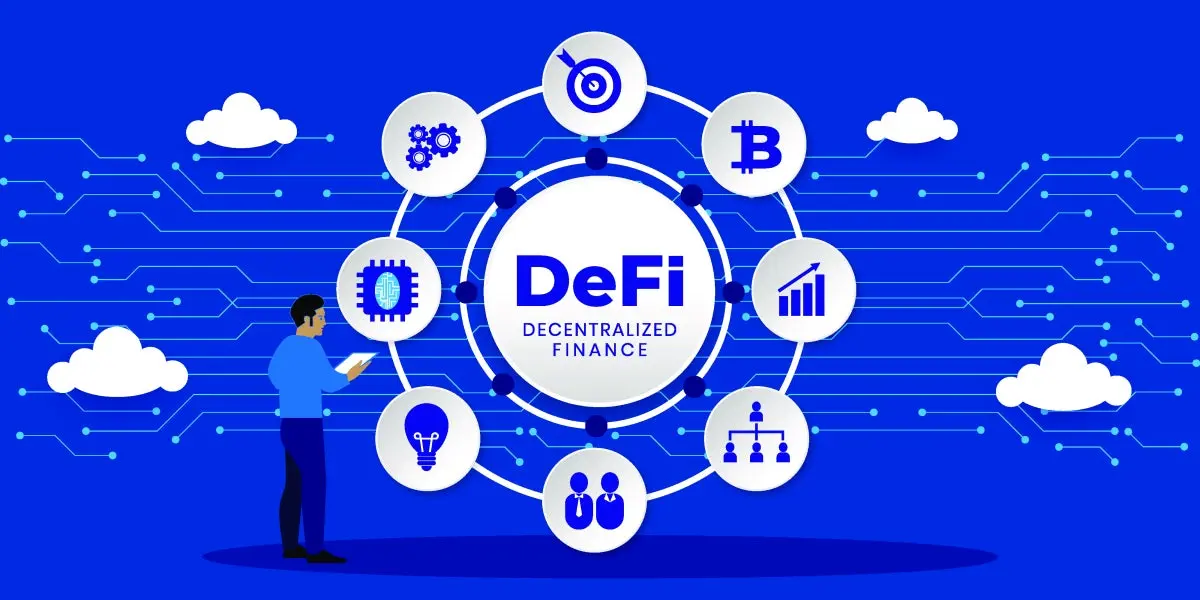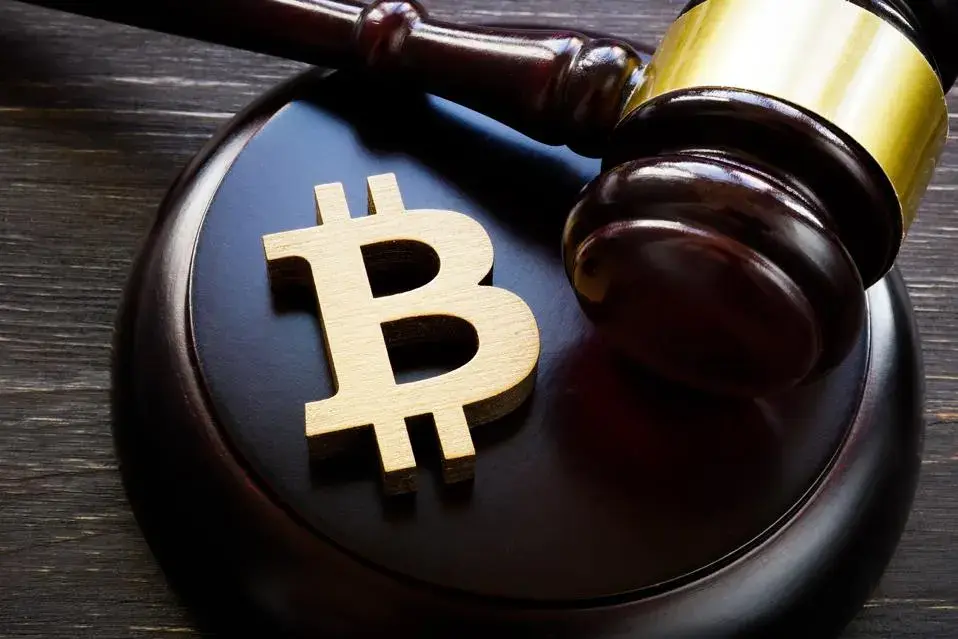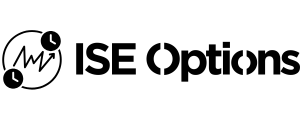Exploring the world of cryptocurrency options can feel overwhelming at first. You have the choice between decentralized finance (DeFi) options and traditional, centralized exchange (CEX) options, each offering distinct features.
DeFi options give you greater control over your assets, allowing you to trade directly through smart contracts without intermediaries.
On the other hand, centralized exchange options provide a structured environment with more user-friendly interfaces and often faster trading speeds. They are typically regulated, which can offer a sense of security to traders who are wary of the risks associated with DeFi platforms.
This structure makes CEX options attractive to those who are new to the crypto space.
So, which option is better?
It depends on what you prioritize: the decentralized autonomy of DeFi or the security and simplicity of CEX. Understanding the differences and what each type offers can help you make informed decisions in your cryptocurrency journey.
Understanding DeFi and Centralized Exchanges
DeFi and centralized exchanges offer different approaches to cryptocurrency trading. DeFi uses blockchain for secure, peer-to-peer financial services.
Centralized exchanges handle trades on behalf of their users, but require trust in the platform.
Definition of DeFi and Its Ecosystem

Decentralized Finance, or DeFi, refers to a set of financial services using blockchain technology.
With DeFi, you can trade, lend, and borrow cryptocurrencies directly with others.
Smart contracts automate these transactions, cutting out intermediaries like banks.
The DeFi ecosystem features diverse applications and platforms, like decentralized exchanges (DEXs), which facilitate peer-to-peer trades.
DEXs give you control over your private keys, enhancing your privacy and security.
Cryptocurrencies and stablecoins are common in DeFi transactions, providing liquidity and stability.
With DeFi, you enjoy financial services with increased transparency and lower fees.
Overview of Centralized Exchanges

Centralized exchanges (CEXs) act as intermediaries connecting buyers and sellers. These platforms, like Binance and Coinbase, manage your trades by holding your funds in their systems.
This approach can be more user-friendly for beginners, as the exchange handles technical operations and security.
You trade cryptocurrencies using an account managed by the CEX, trusting them to safeguard your assets and personal information.
Centralized exchanges often comply with regulations, which can provide a degree of safety and stability.
Fiat currency support is another advantage, simplifying your transactions.
Trading on CEXs is faster due to the streamlined processes, but can involve higher fees.
Key Characteristics of DeFi Options
Decentralized Finance (DeFi) options are transforming the financial landscape by utilizing blockchain technology. These options provide users with enhanced control, broad accessibility, and a secure environment for executing trades. They are fundamentally different from traditional options in several important ways.
Smart Contract Implementation
Smart contracts are integral to DeFi options. These are self-executing contracts with the terms of the agreement directly written into code.
They operate on blockchain networks like Ethereum. This ensures transparency since all terms and transactions are recorded and accessible by anyone on the network.
Automation is a significant advantage here, eliminating the need for intermediaries, reducing costs, and speeding up processes.
Security is another strong point. Once deployed, these contracts are immutable, protecting them from tampering or fraud.
For those involved in DeFi options, understanding smart contracts ensures you realize how your options execute. This brings trust into the financial dealings, which is crucial for any trader or investor opting for DeFi.
Permissionless and Trustless Nature
DeFi options offer a permissionless environment. This means anyone with an internet connection can participate without needing approval from a central authority. This broadens access to financial services for many people globally.
The trustless nature of DeFi options is facilitated by blockchain itself. You don’t need to trust a central institution to handle your trades correctly.
The reliability lies in the blockchain’s technology, ensuring transactions occur as coded in the smart contracts.
Seamless transactions and open access define the DeFi experience, catering to a wide audience needing flexible financial solutions.
Liquidity and Market Depth
Liquidity in DeFi options is bolstered by automated market makers (AMMs), which facilitate trades with pooled liquidity.
This system allows continuous trading, ensuring that you can execute trades with minimal slippage and consistent pricing.
Market depth in DeFi is still evolving and can sometimes be lower compared to traditional markets. However, its growing influence in the financial world is undeniable, with more participants and innovations driving greater liquidity.
As this ecosystem develops, DeFi options aim to match and eventually surpass traditional market levels, offering competitive and efficient trading environments.
Features of Centralized Exchange Options
Centralized exchange options are known for their user-friendly design and strong regulatory frameworks. They offer a smooth trading interface and prioritize security, making them appealing to users who value convenience and compliance.
Ease of Use and User Experience
Centralized exchanges often have simple and intuitive interfaces, making them accessible even for beginners.
They usually offer user-friendly dashboards with easy-to-understand navigation. You can find features like real-time market data, advanced charting tools, and integrated order types, which make trading more straightforward.
Another benefit is the presence of customer support services. If you run into any issues, these platforms offer help through various channels, like chat or email.
Mobile apps are also commonly supported, allowing you to trade on the go.
The emphasis on usability helps make centralized exchanges an attractive choice if you are new to cryptocurrency trading.
Regulatory Oversight and Security

A significant advantage of centralized exchanges is their compliance with state and federal regulations. These platforms have to adhere to strict legal standards, which can boost your confidence as a trader.
Know Your Customer (KYC) requirements are often mandatory, adding another layer of identity verification.
Security measures are taken seriously, with platforms often using encryption and two-factor authentication (2FA) to enhance safety.
Another feature is the use of cold storage for funds, which protects assets from hacking attempts.
Financial Instruments Compared
In exploring DeFi options and centralized exchange options, you need to consider the types of contracts and how they are priced. Each setting has a unique structure influencing how you trade options.
Types of Options Contracts
In DeFi, options contracts are often customizable and operate on smart contracts. These are coded into the blockchain, allowing for unique terms tailored to traders’ needs.
You can design options with specific conditions like strike prices or expiration dates. This flexibility is a key feature of DeFi.
Centralized exchanges usually offer standardized options contracts. These have fixed terms and are similar across different platforms. This allows for easier trading as terms are familiar and broadly understood. Institutions often prefer this consistency.
Both systems present benefits. In DeFi, the customization appeals to individuals seeking specific conditions. For more traditional traders who value consistency, centralized exchanges might be more comfortable.
Pricing Mechanisms
In DeFi, pricing often depends on algorithms, with automated market makers (AMMs) playing a crucial role.
These AMMs determine prices based on supply and demand, fluctuating in real-time. You might encounter more price volatility here due to market conditions.
Centralized exchanges typically use order books for pricing. Buyers and sellers list their prices, and the platform matches them.
This method can lead to greater stability as prices reflect the consensus of traders at any moment.
Pricing in DeFi can be more dynamic, while centralized exchanges offer predictability. The choice between them can depend on whether you prioritize rapid market responses or consistent pricing signals.
Access and Inclusion
Access to DeFi and centralized exchange options can vary significantly. You’ll find differences in global accessibility and the verification processes required by each platform type.
Global Accessibility
DeFi platforms are usually accessible to anyone with an internet connection. These platforms are built on blockchain and aren’t tied to geographical locations, so you can use them from anywhere. This makes DeFi appealing if you are in areas with limited financial services.
Centralized exchanges might face restrictions based on your location due to regulatory requirements. These exchanges often have specific licenses to operate in certain countries. This can limit access if you’re in a region where laws restrict such platforms.
Both DeFi and centralized exchanges aim to provide financial services to as many users as possible, but DeFi is often more globally accessible due to fewer legal limitations.
Verification Processes
With DeFi, you can often start using a platform with just a cryptocurrency wallet. There’s usually no need for identity verification, allowing you quicker access. This can attract users who prioritize privacy and fast setup.
In contrast, centralized exchanges generally require more extensive Know Your Customer (KYC) processes.
This involves identity checks and documentation, such as your passport or driver’s license.
While this can take time, these steps are in place to ensure compliance with anti-money laundering laws. If you prefer secure environments with verified users, these verification steps might be reassuring.
Security and Risk Management
When comparing security and risk management, DeFi and centralized exchanges (CeFi) differ mainly in how they handle asset protection and risk. Each offers distinct benefits and challenges, from smart contract vulnerabilities to exchange-ledger safeguards.
Smart Contract Audits and Risks
In DeFi, your assets interact with smart contracts, pieces of code executing automatically when certain conditions are met. While this removes the need for intermediaries, it also introduces risks.
Smart contracts are as secure as their code. Errors or vulnerabilities can lead to loss or theft of assets.
Frequent audits are necessary to minimize risks. These audits review the code to identify potential flaws.
However, audits are not foolproof. Flaws may still exist post-audit, leaving you vulnerable.
It’s crucial to choose platforms that have undergone thorough and frequent audits by reputable firms to enhance safety.
Centralized Exchange Custody and Insurance
With centralized exchanges, you trust the platform to safeguard your assets. They offer user-friendly services with increased oversight.
Custodial wallets on these exchanges store your assets, generally providing an extra layer of protection. Insurance offers additional security, covering losses in cases like hackers breaching security systems.
Yet, relying on a centralized body has its own risks. These exchanges are attractive targets for hackers.
While they work hard to secure systems, history has shown breaches can occur.
Be sure to choose exchanges with a proven track record in security and those offering insurance coverage for peace of mind.
Market Liquidity and Volume
Market liquidity and trading volume are crucial factors when choosing between DeFi options and centralized exchange options. Liquidity affects how easy it is to buy or sell assets, while volume can impact price stability and transaction speed.
DeFi Liquidity Pools
In DeFi, liquidity is provided by users who pool their assets into liquidity pools. These pools enable trading without needing a middleman. Liquidity providers earn fees from the transactions that occur in the pool.
DeFi platforms can offer liquidity on a wide range of tokens. The liquidity and volume depend on the number of assets available in the pool.
High participation leads to better liquidity and lower price slippage.
Trading on DeFi platforms can sometimes result in higher costs if there are sudden shifts in the market or if a particular pool lacks sufficient funds. This can lead to slippage, which occurs when the expected price of a trade differs from the executed price due to insufficient liquidity.
Centralized Exchange Order Books
Centralized exchanges use order books to match buyers and sellers. These order books display all buy and sell orders in a list, providing more transparency about available liquidity and trading volume.
These exchanges often have higher liquidity due to larger user bases.
This can result in smaller price differences between orders, known as tighter spreads, which can reduce trading costs for you.
Centralized exchanges may support higher volumes of trading, leading to greater price stability.
Established platforms usually offer more traditional financial services like margin trading and leverage, attracting more traders and increasing activity on the exchange.
Community and Governance
In the world of DeFi, communities play a crucial role in decision-making, often using governance tokens. These tokens give you a say in various protocol decisions.
Let’s explore how governance tokens influence community engagement and decision-making in decentralized finance.
Role of Governance Tokens in DeFi
Governance tokens are powerful tools in DeFi. They allow you to participate in the decision-making process of a platform.
By holding these tokens, you can vote on proposals affecting the future of the protocol. This might include changes in fees, new features, or the allocation of funds.
These tokens encourage community involvement, ensuring that the platform reflects the users’ preferences and needs. Your voting power usually depends on the number of tokens you hold, aligning decision-making power with investment interest.
This decentralized approach contrasts with centralized exchanges, where decisions are made by a central authority without direct community input.
Costs and Fees
Understanding the costs associated with DeFi platforms and centralized exchanges can help you make informed decisions. Both have unique fee structures that can impact your trading strategy.
Transaction Fees on DeFi Platforms
On DeFi platforms, you usually pay gas fees for each transaction. These fees can fluctuate based on network congestion.
Gas fees are payments made by users to compensate for the computing energy required to process and validate transactions on the Ethereum blockchain.
DeFi platforms don’t charge trading fees since they are not controlled by a central authority. Smart contracts handle transactions, eliminating middlemen and reducing costs.
Nonetheless, high gas fees can sometimes make transactions expensive.
In summary, while DeFi platforms have no set trading fees, gas fees can vary significantly, impacting your costs.
Trading Fees on Centralized Exchanges
Centralized exchanges charge trading fees based on your transaction volume. These fees are often a percentage of your trade and can range from 0.1% to 0.5% or more.
Some exchanges offer lower fees for users with higher trading volumes or holding specific tokens, providing a tiered fee structure.
Unlike DeFi platforms, these exchanges do not have gas fees. However, you may encounter withdrawal and deposit fees when moving funds to and from the platform.
It’s essential to review an exchange’s fee schedule, as costs can vary widely.
Centralized exchanges offer predictability in fees, but be aware of additional charges that can add up over time.
Evolution and Future Outlook
Decentralized Finance (DeFi) options continue to evolve, with new technologies enhancing accessibility and security. Centralized exchanges are also adapting by integrating innovative features to remain competitive. Both sectors are making strides to improve user experiences and address inefficiencies.
Innovations in DeFi Options
DeFi options are transforming by integrating “smart contract” platforms that increase efficiency and reduce the need for intermediaries.
The “trustless” nature of these contracts allows transactions to happen smoothly once pre-set conditions are met.
The decentralized nature of DeFi enhances security, as users maintain control over their assets. This reduces the risks associated with traditional custodial systems.
DeFi platforms are also focusing on interoperability, allowing seamless asset movement across different blockchains.
User-friendly interfaces are being developed to close the gap between complex tech and everyday investors, making DeFi more accessible.
Centralized Exchange Adaptations
Centralized exchanges are adapting by introducing features to emulate the flexibility found in DeFi.
These adaptations include improved security measures such as two-factor authentication and regular audits to protect user funds.
Centralized platforms are also aiming to provide faster transaction speeds by utilizing cutting-edge technologies.
Additionally, they are incorporating user education on cryptocurrency trading to help newcomers feel more comfortable.
Some exchanges are experimenting with hybrid models, combining features from centralized and decentralized systems to offer users the best of both worlds. This includes partial decentralization allowing for more user control over assets while maintaining the convenience of centralized features.
Frequently Asked Questions
Understanding the differences between DeFi and centralized exchange options can help you decide which one suits your trading needs. Both have unique advantages and challenges, so considering security, user experience, and wallet types is crucial.
What are the key differences between DeFi and centralized exchange options?
DeFi options allow for peer-to-peer trading without intermediaries, offering more control. Centralized exchanges involve a third party to facilitate trades, providing ease of use.
While DeFi offers more privacy, centralized exchanges typically offer more fiat-to-crypto pairs. Consider your need for autonomy versus convenience when choosing between them.
What are the major downsides of decentralized exchanges in comparison to centralized exchanges?
Decentralized exchanges may have lower liquidity and slower trade execution. These platforms often lack customer support, making them hard for newcomers.
The absence of a central authority also means users take full responsibility for their funds, increasing the risk if you’re not vigilant.
How do the security features compare between DeFi platforms and centralized exchanges?
DeFi platforms are less prone to hacking, due to their decentralized nature. Still, smart contract vulnerabilities can be a risk.
Centralized exchanges may have stronger regulatory oversight, offering insurance on funds, but they are often more targeted by hackers due to holding a large pool of assets.
What factors are crucial to consider when choosing between DeFi and centralized exchange options?
Key factors include the level of control you want, the range of assets offered, and your priority on user experience.
Consider liquidity, transaction fees, and whether you need features like margin trading. Evaluate how important customer support and regulatory compliance are for your needs.
How does user experience differ between using DeFi options and centralized exchange options?
Centralized exchanges often provide a smoother onboarding process with simple interfaces, making them beginner-friendly.
DeFi options usually require more technical knowledge and active management of private keys and wallets. User-friendly designs are less common, although this is slowly improving with new platforms.
What are the benefits and limitations of using a decentralized wallet over a centralized wallet?
A decentralized wallet provides full control over your assets and private keys, enhancing your security.
Unlike centralized wallets, where the provider controls your keys, you’re responsible for safeguarding your funds.
This control can be empowering, but it also holds greater risk if you lose access.
